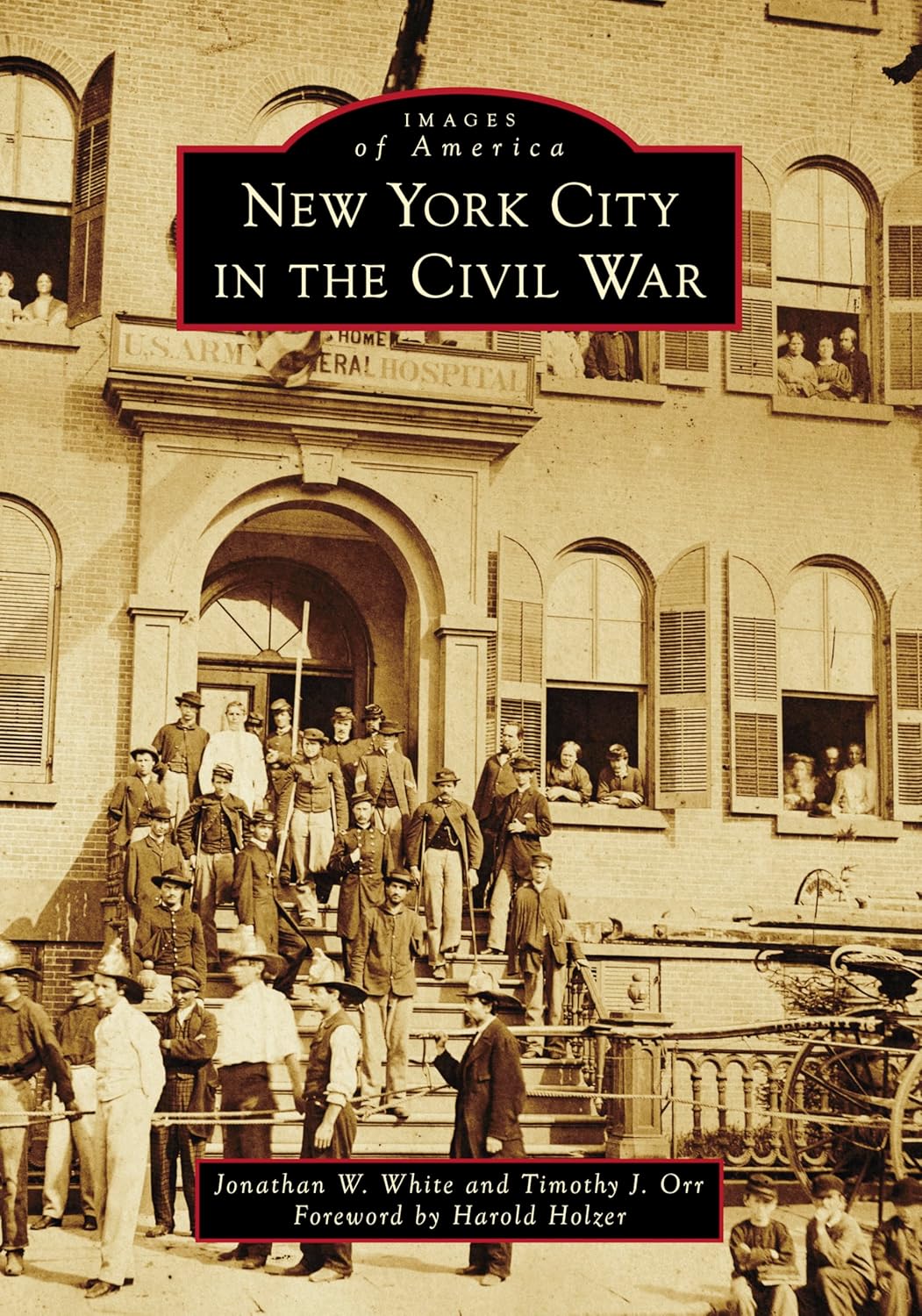Book Review: New York City in the Civil War

 New York City in the Civil War. By Jonathan W. White and Timothy J. Orr. Charleston, SC: Arcadia Publishing, 2024, Softcover, 160 pp., $24.99.
New York City in the Civil War. By Jonathan W. White and Timothy J. Orr. Charleston, SC: Arcadia Publishing, 2024, Softcover, 160 pp., $24.99.
Reviewed by Tim Talbott
Sometimes, as the old saying goes, “a picture is worth a thousand words.” If that adage was literally the case with New York City in the Civil War, it would obviously be much longer than its 160 pages. However, in this recent addition to Arcadia Publishing’s “Images of America” series, authors Jonathan W. White and Timothy J. Orr have gathered together what may be the finest collection of images to help tell Gotham’s story and explain its role during America’s defining historical period. Those familiar with Arcadia’s “Images of America” series, understand that their volumes largely consist of various subject images with descriptive captions. That holds true as well for New York City in the Civil War.
To open the book the authors provide readers with a thought-provoking Foreward, written by museum professional, renowned Lincoln scholar, and New York City native Harold Holzer that sets the tone for what is to come. As Holzer explains, “This book attests in vivid pictures and expert text to what New York and New Yorkers looked like—indeed, felt like—during this roiling era. Here are the imposing landmarks and sordid slums as well as municipal poohbahs, visiting celebrities, and the ordinary people who labored in factories and on the docks. Here too are the military parades, rallies, fundraisers, and funerals that reminded inhabitants they were living through a time of upheaval.” (6)
In addition to Holzer’s Foreward, a page of acknowledgements appreciates those institutions and individuals who contributed images or information contained within the book. A brief but informative Introduction explains that in spite of the fact that New York City sent thousands of soldiers to the Union army, and thus involved the lives of tens of thousands more, and that “the city was an entrepot that provided uniforms, weapons, supplies, medical care, and safe harbor for naval vessels,” still, “yet many aspects of New York City life continued as if the war were not taking place.” (8)
Twelve chapters follow the Introduction and include: “On the Verge of Disunion,” “The Secession Crisis,” Mobilizing for War,” “New York City’s Boys in Blue,” Street Scenes and Social Life,” “Politics and Politicians,” “Destroying the Atlantic Slave Trade,” Draft Riots,” “Gotham’s Black Soldiers,” “The Great Metropolitan Fair,” “The Election of 1864,” and “A City’s Memories of War.” Each chapter features an explanatory introduction that is usually about three or four paragraphs. The images included in each chapter consist primarily of a mixture of period photographs and woodcut images printed in period publications like Harper’s Weekly and Frank Leslie’s Illustrated Newspaper. Informative captions accompany the images providing helpful facts about the people, places, and events they depict. The authors’ subject matter expertise comes shining through in these concise yet educational captions.
Chapters like “New York City’s Boys in Blue,” “Politics and Politicians,” “The Draft Riots,” and “Gotham’s Black Soldiers” are particularly informative for readers. Many of the names of New York City individuals and regiments will likely be familiar to Civil War enthusiasts, but seeing their images—some of which have received little previous exposure—adds a special dimension to truly understanding who they were and their importance. Source attributions are provided for each image. And while a number of images come from the vast holdings of the Library of Congress, several are from less familiar or even private collections.
Other than the 1863 draft riots, New York City has received relatively little study when one considers the important role that America’s largest metropolitan area played in aspects like politics and finance during the Civil War. However, with New York City in the Civil War, a much needed pictorial history is now available that in many ways contributes much more than thousands of words ever could.
I love books in the Images of America series. This one is a real find.
Speaking of New York City in the Civil War, there is a fine book on the July 1863 draft riots, THE METROPOLITAN POLICE: THEIR SERVICES DURING RIOT WEEK – THEIR HONORABLE RECORD by David M. Barnes, who was a local journalist. He was caught up in the riots, and interviewed dozens of participants for his book, which was published in September 1863. The volume is difficult to locate, but well worth the effort if you can find it.
Looks great! A question, though. Is the then independent city of Brooklyn included in the volume? As a Jersey Boy, I always loved how Manhattan was treated as the only “real” part of NYC!
I read and enjoyed this book. I was moved to watch again Martin Scorsese’s film “The Gangs of New York” which offers a powerful story of some of the themes the book develops.